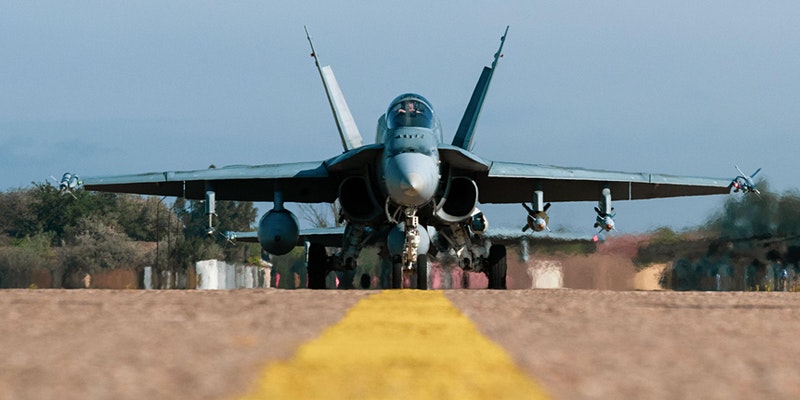Throughout the fall of 2020, Theodore McLauchlin and Marie-Joëlle Zahar, Professors at the University of Montreal, organized a series of virtual workshops in association with the Network for Strategic Analysis (NSA) on capacity building in the era of COVID-19. To close this series, a fifth workshop focused on the Canadian Armed Forces, their challenges and adaptations during the coronavirus pandemic. Speakers featured Stéphanie Bélanger, professor at the Royal Military College of Canada and a Canadian Armed Forces Reservist; LCol Pierre Leroux, J5 (i) at Canadian Joint Operations Command; Theodore McLauchlin, professor at the University of Montreal; and Major Audrey Hudon, a social worker with the Canadian Armed Forces[1].
Currently deployed on over twenty operations abroad and on Canadian territory, the Canadian Armed Forces (CAF) have had to review and adapt their interventions in a global pandemic context. The CAF is trained to work in exceptional contexts, whether it be natural disasters, political crises, or humanitarian aid. Assisting isolated communities and citizens, working under strict health conditions, managing morgues: these are all situations that the armed forces are trained to respond to. This is not the first time they have had to intervene in a health context linked to an epidemic. Nevertheless, in the current context, two trends in terms of impact seem to be emerging: the effect of the pandemic on CAF interventions abroad and the impact it has had on the national mobilization of these forces.
Capacity Building Abroad: Navigating a New International and Health Context
The missions of the armed forces abroad and their objectives have not changed. Still, how they are carried out, including how capacity building is managed, has been fundamentally impacted by the pandemic and the many health measures to be respected. The CAF had no choice but to adjust its interventions internationally and re-evaluate the deployment of 2,000 troops abroad.
The adjustments made to the Unifier operation in Ukraine illustrate the pandemic’s impact on the way capacity building has been modified over the last year. The situation has forced the government to question the CAF’s priorities for defence and security capacity building. Operation Unifier is part of operations that were paused for a while during the summer before resuming in the fall of 2020. In the field, a whole logistics system has been put in place over the past few months to limit the health risks for the FAC, including the delimitation of risk zones from red (high risk of infection/uncontrollable environment) to green (controlled risk of infection), mitigation measures, or even troop withdrawal from certain regions (based on risk assessments).
Capacity building is essentially based on creating links and mutual trust between the different actors present – elements that are difficult to maintain in times of a pandemic. It requires co-operation between actors with expertise and actors who will be recipients of that expertise, thus depending on how local forces perceive the training forces. However, creating a close relationship and trust bonds can be difficult when human contacts have to be reduced. The work of capacity building in the current context is, therefore, more difficult. Still, the CAF finds alternatives to adapt to social distancing obstacles with activities that do not require face-to-face contact. Although relations with local forces are now different, less warm in times of a pandemic, it is still possible to work on structural elements by focusing on improving training standards or the framework of interventions.
Mental health services available to CAF also had to be adapted. For example, virtual preparations replaced the classic “Pre-deployment – during deployment – post-deployment” evaluation meetings. Both in Canada and abroad, digital platforms were heavily mobilized. In the case of mandatory isolation during deployment, contact was maintained daily via a platform or telephone call with the CAF members in isolation. The study of the pandemic’s impact on the CAF will have to be conducted at several levels of analysis: at the organization’s level to understand how it has adapted, and at the individual level to explore the personal consequences for CAF members.
In Canada: A New Reality for the Military Mobilized on Operation Laser
The consequences of the pandemic on Canadian military activities seem to have been greater at home than abroad. Operation Laser required an impressive adaptation effort on the part of the CAF, with 24,000 troops ready to respond and be deployed across Canada at any time: regular troops, reservists, Canadian rangers. With three objectives, Op Laser is:
- Saving lives;
- Assisting federal, provincial, territorial, and regional partners;
- Maintaining the readiness, effectiveness, and resilience of the CAF.
This operation required a great deal of adaptive effort on the CAF’s part in its own territory. Feedback from the CAF members mobilized on this operation shows that most of them learned a great deal from their experience. They were able to gain humility, put forward their professional ethics, and discover another aspect of their work, one that nonetheless responds well to why they are committed: committing to their nation and its security. Since December 2020, CAF members are also mobilized to support the distribution of the COVID-19 vaccine in Canada through Operation Vector.
In addition to mental health issues and maintaining the link between social workers and deployed members, the issue of boredom during deployment and long periods of isolation was also brought forward. To respect health measures, mid-deployment leaves have been paused, and boredom can set in for troops mobilized over a long period of time. Nevertheless, this new way of operating also has a logistical advantage for military personnel, who are not obliged to disrupt family organization with round trips in COVID-19 time. On the return trip, it was difficult for CAF members to be so close to home but not go there until they had completed their mandatory quarantine. It was also difficult for soldiers deployed on Operation Laser to be so close to their environment but not be able to get there.
This operation also brought the issue of reservists back to the forefront, both in their training and support. The reserve comes with its own set of challenges – the relational bonds between the troops are not the same as for a team trained to work together over the long term, social support may not be as present. While they responded in large numbers to Operation Laser, special consideration was given to them to make sure that they would not fall through the cracks of the support system after their deployment. It can take up to 5 years to complete training in the CAF reserve at this point in time and this fact raises even more questions in times of the coronavirus pandemic, especially regarding operational issues.
With all these adaptations, the pandemic’s influence on the mobilization of forces on the national territory has become an important concern for the Canadian government, and for the Canadian Institute for Military and Veterans Health Research (CIMVHR). The latter has invested in several longitudinal studies to study the impact of COVID-19 on CAF personnel over the past few months, particularly through their mobilization for Operation Laser. The CIMVHR also offers a special issue of the Journal of Military, Veteran and Family Health (JMVFH) “Addressing the needs of military members, veterans and their families during the COVID-19 pandemic”.
Conclusion
The armed forces’ operational and strategic adjustments in response to the coronavirus pandemic have raised many issues and questions that will need to be considered over the medium and long term.
- In the short term, how can we protect CAF personnel from the virus in a context where more and more operations are taking place in high-risk national areas?
- To what extent will the pandemic and its budgetary impact affect the ability to deploy and sustain operations abroad over the long term?
- More broadly, what will be the priorities of the Canadian Armed Forces over the next few years?
In a changing world in which the armed forces must adapt and reinvent themselves, older questions are reiterated, such as the way to retain both regular and reserve members or maintain the quality of the mental support provided to them. Even more so at this time, the moral and psychological support offered to CAF personnel is crucial. How can the CAF ensure that it maintains the best possible personnel while increasing retention in the face of a situation as unique as the coronavirus pandemic?
As for the increasingly systematic use of technology – to maintain a link with the military and make the necessary preparations for their deployment – their increased mobilization implies questioning the security issues that may arise simultaneously (information leaks, identification of military personnel, etc.).
Capacity building operations delivered by the CAF respond to a need to support foreign partners facing shared security challenges, such as the counterterrorism effort or in support of peace operations in unstable regions. This type of activity comes with its own set of challenges. There is always a risk that operations will not achieve the expected results and will be seen as a waste of effort, that the political context will not be conducive to the smooth conduct of activities, or that unintended effects may be perceived (e.g., that training received by local forces will not be put to good use). As discussed throughout the NSA’s workshop series, the pandemic has increased the challenges posed to this practice with direct consequences on the way capacity building is delivered by the CAF abroad and by creating a context in which CAF is increasingly in demand domestically. In addition, in the mid-term, the risk will be to face limited budgetary means due to the pandemic’s economic impacts. Given that capacity building efforts take place in a multilateral context – typically operations are conducted by several forces within a coalition – the future consequences of the pandemic will therefore have to be analyzed as part of a whole, and attention will have to be paid to international co-operation and military institutions.
[1] However, the ideas presented are those of the author.





Comments are closed.